Or search by topic
Number and algebra
Geometry and measure
Probability and statistics
Working mathematically
Advanced mathematics
For younger learners
Factors and Multiples Game
- Game
- Student Solutions
- Teachers' Resources
Many thanks to everyone who shared their solutions with our team. We were very impressed by your resilience and perseverence to produce the chains that you submitted to NRICH. Several of you sent in more than one solution, substituting an earlier chain with an even longer one after spending more time on the challenge. Well done to you all!
We've published below a selection of increasingly long chains which have a screenshot showing the full chain, or a list of its factors and multiples. We hope this list inspires you to keep working on your own solutions and perhaps consider the length of the longest possible chain, and the reasons for your answer.
Let's begin with Montsaye Community College in Northamptonshire where their students took on the challenge of generating the longest possible chain.
Gabrielle and Lauren reached a total of 50 numbers:
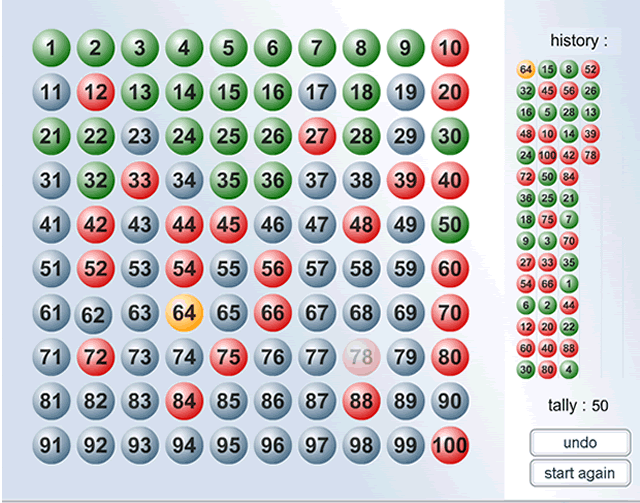
Aravindan, from GHS in India, shared this chain of 51 numbers:
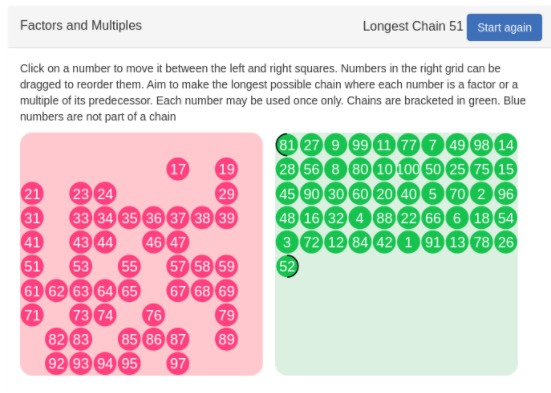
Makenzie, from Mountsaye Community College, managed to improve on this with a chain of 55 numbers:
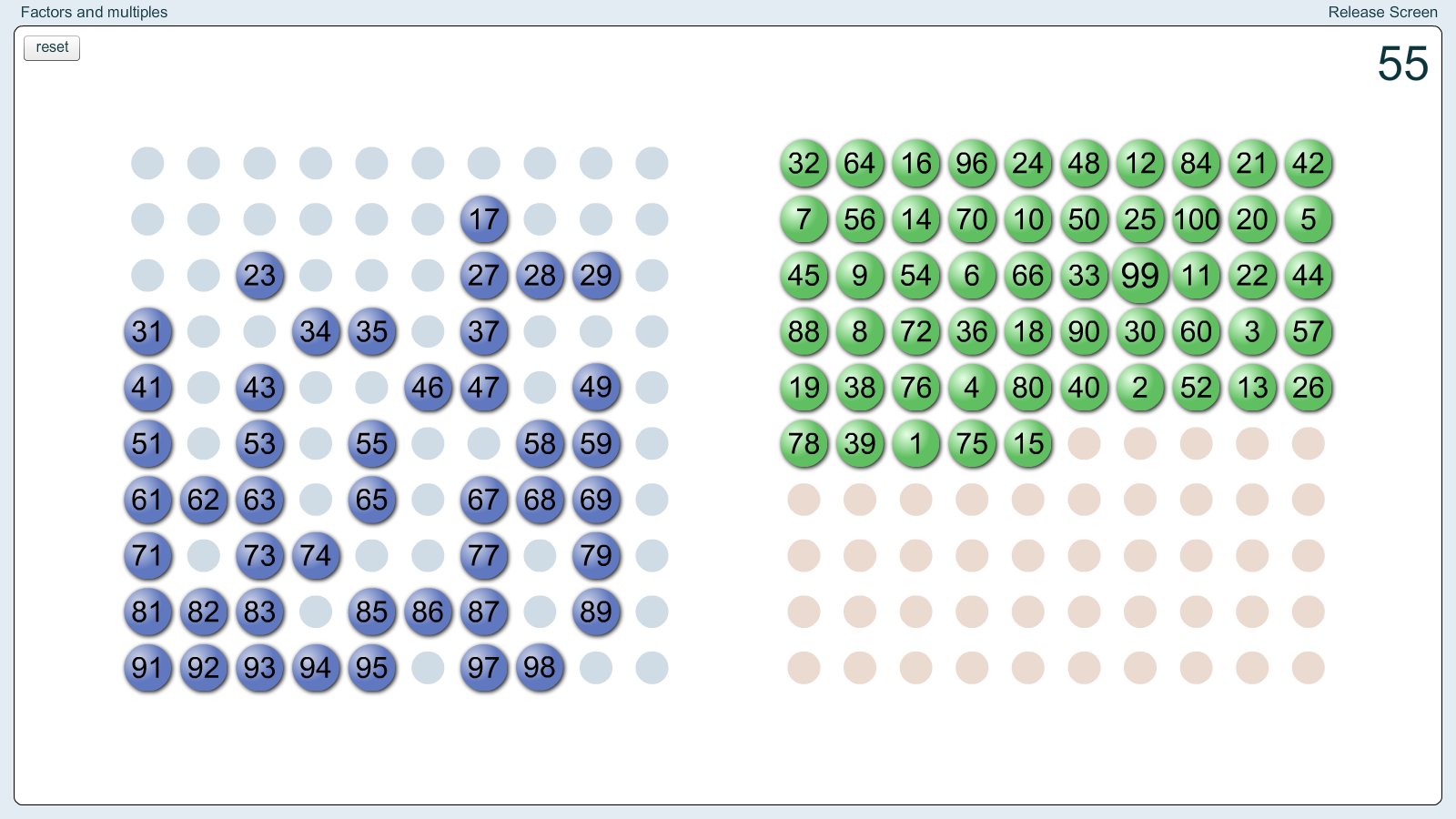
Sophie and Tasmin, also from Mountsaye, managed to improve on that with this chain of 56 numbers:
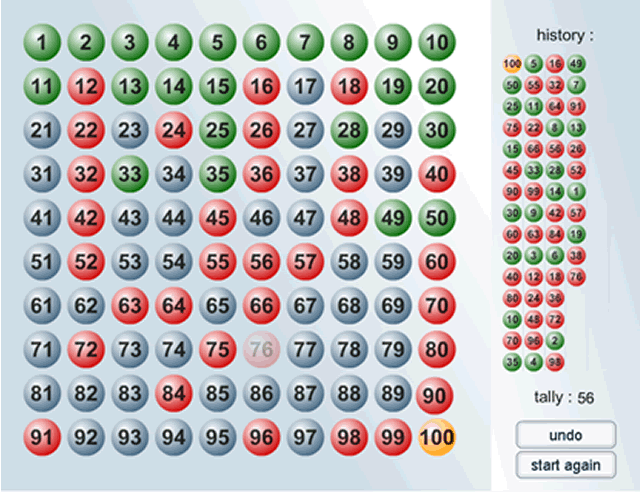
Then, Gabrielle and Lauren managed to improve on their earlier effort with this new chain featuring 59 numbers:
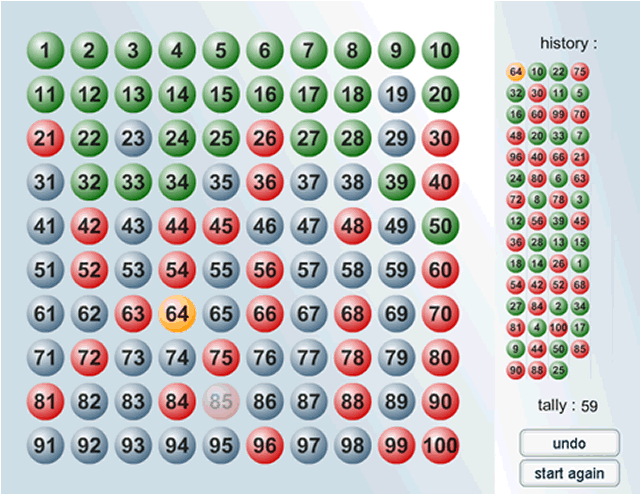
Aravindan improved on his previous effort to produce this chain of 60 numbers:
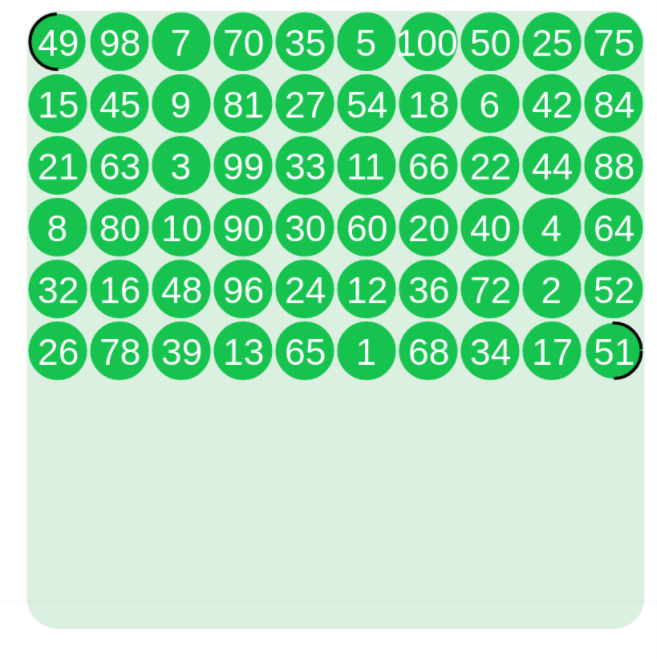
Abigail from Ridgewood School managed a chain of 61 numbers:

Alfie, Manuel, Jack and Emilio from Newhall School in Chelmsford, Essex, worked as a team to also produce a chain of 61:
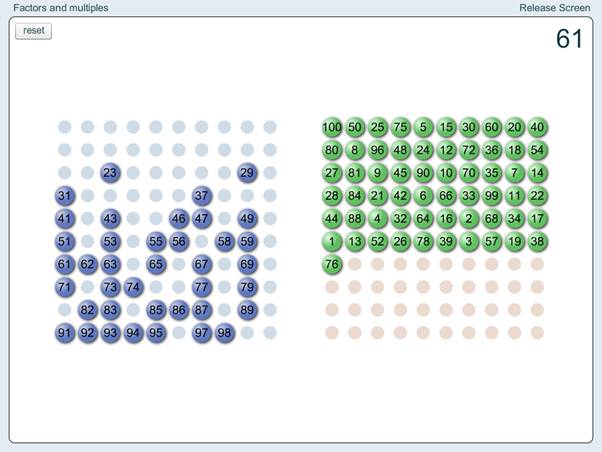
A.H. from Manorfield Primary School has improved on this by finding a chain of 63 numbers:
90-9-99-33-66-11-44-22-88-8-80-40-10-100-20-60-30-15-75-25-50-5-35-7-70-14-56-28-84-21-42-6-78-39-13-26-52-4-68-34-17-51-1-46-92-23-69-3-57-19-38-76-2-24-72-18-36-12-48-16-24-32-96
This solution came in from Ralph and Max at the Institut International de Lancy in Switzerland. Their teacher said they did not use a computer or calculator. They made a chain of 65, which seems to be a very popular answer.
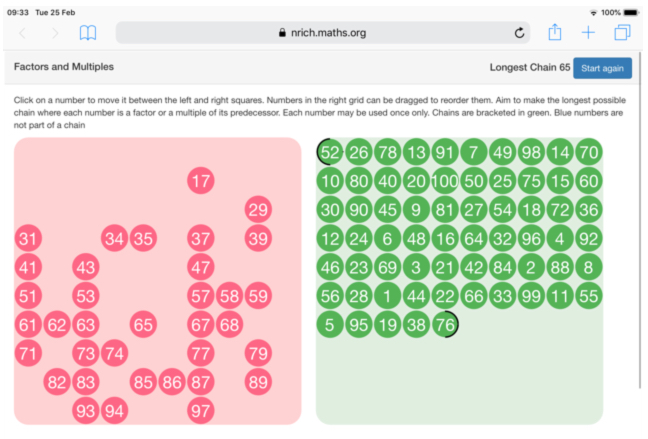
Evie from Deansfield Primary School created a chain of 65 numbers:
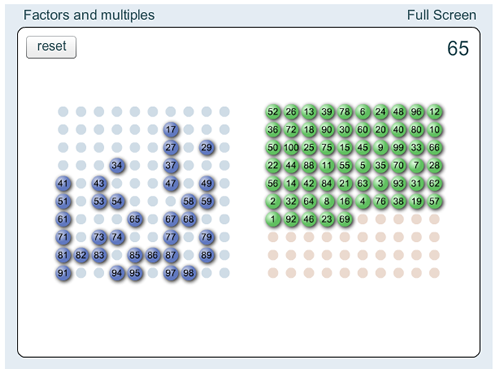
James from Ridgewood School went one better with this chain of 66 numbers:

Linda from Bohunt School used 68 numbers:
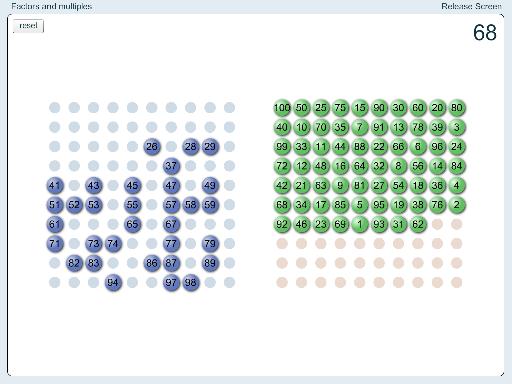
A group of Year 9 students from The Perse School for Girls in Cambridge worked together and managed an even longer chain of 71 numbers:
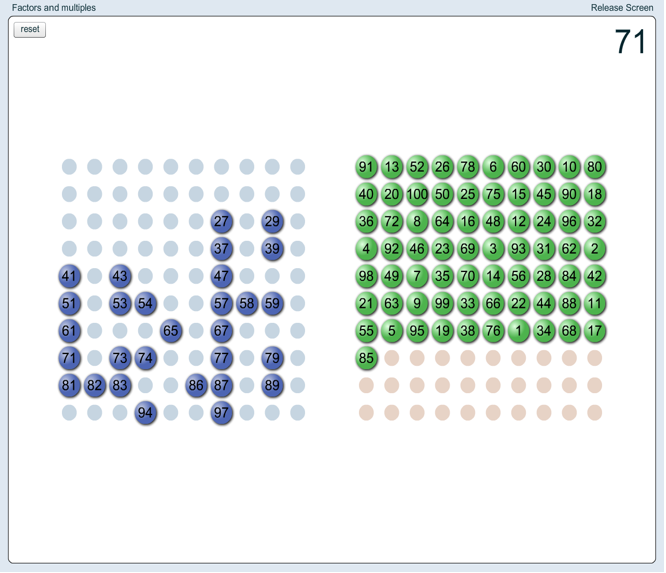
And Claire, of Blackheath High School in London, has managed to improve on that with this chain of 73 numbers:

Jacky, from Princethorpe College in Rugby, has managed to go one better with a chain of 74:

Jesse from Moriah College in Sydney, Australia also managed a chain of 74 numbers:

Izaak, from Hills Rd VI Form College, used some computer programming techniques to try to make the longest chain he could. Below is his 76 long chain. If you want to read about his program and see his code, he has shared it on Github.

We've also received a few chains using 77 numbers!
Millie from Hursthead Junior School in the UK sent in this solution:
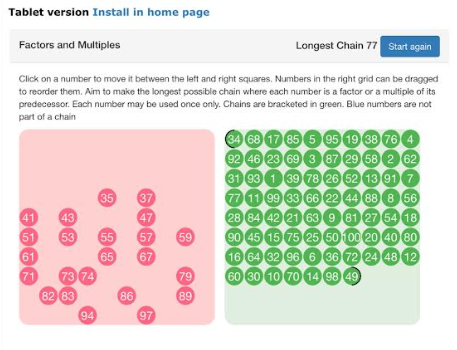
Well done Millie! Jakob from Haberdashers Adams School in the UK also found the same solution.
We received a different chain of 77 numbers from Michelle at The Coopers' Company and Coborn School in the UK:

Ahaan from Newcastle Under Lyme School found the same chain, and Sarisha from Newcastle Under Lyme School found this chain of 77 numbers:
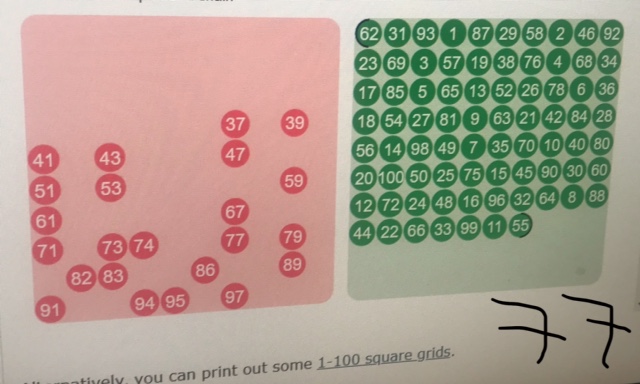
Can you see how this is related to Michelle's chain above?
Miraya from Heckmondwike Grammar School shared these strategies for developing longer and longer chains:
First of all not use the numbers one to ten since they are the common multiples or factors of any given number between one to hundred. Next , the other thing you have to remember is to try not to use prime numbers as the prime numbers have factors that are only 1 you can use multiples but they will not last very long. Try to find out the common multiple factors as well. Also, try to use the bigger numbers since they will have the most factors. Finally , try to use the common numbers with the most multiples under 100 for example 10 or 11 since they have multiples in every ten numbers.
Well done to all of you, and to those of you who found chains of 77, congratulations, you have found the longest chain.
Thank you to Josh Tutin who sent us a link to The On-Line Encyclopedia of Integer Sequences, and the table below, which lists the longest possible chains using the numbers from 1 to n, where n is smaller than 200. Click to see the table. Can you produce some of these chains?
| n | Longest chain |
|---|---|
| 1 | 1 |
| 2 | 2 |
| 3 | 3 |
| 4 | 4 |
| 5 | 4 |
| 6 | 6 |
| 7 | 6 |
| 8 | 7 |
| 9 | 8 |
| 10 | 9 |
| 11 | 9 |
| 12 | 11 |
| 13 | 11 |
| 14 | 12 |
| 15 | 13 |
| 16 | 14 |
| 17 | 14 |
| 18 | 16 |
| 19 | 16 |
| 20 | 17 |
| 21 | 18 |
| 22 | 19 |
| 23 | 19 |
| 24 | 21 |
| 25 | 21 |
| 26 | 22 |
| 27 | 23 |
| 28 | 24 |
| 29 | 24 |
| 30 | 26 |
| 31 | 26 |
| 32 | 27 |
| 33 | 28 |
| 34 | 28 |
| 35 | 29 |
| 36 | 30 |
| 37 | 30 |
| 38 | 30 |
| 39 | 31 |
| 40 | 32 |
| 41 | 32 |
| 42 | 34 |
| 43 | 34 |
| 44 | 36 |
| 45 | 37 |
| 46 | 37 |
| 47 | 37 |
| 48 | 39 |
| 49 | 39 |
| 50 | 41 |
| 51 | 42 |
| 52 | 43 |
| 53 | 43 |
| 54 | 44 |
| 55 | 45 |
| 56 | 46 |
| 57 | 47 |
| 58 | 47 |
| 59 | 47 |
| 60 | 49 |
| 61 | 49 |
| 62 | 49 |
| 63 | 50 |
| 64 | 51 |
| 65 | 51 |
| 66 | 53 |
| 67 | 53 |
| 68 | 54 |
| 69 | 55 |
| 70 | 57 |
| 71 | 57 |
| 72 | 58 |
| 73 | 58 |
| 74 | 58 |
| 75 | 59 |
| 76 | 60 |
| 77 | 61 |
| 78 | 63 |
| 79 | 63 |
| 80 | 64 |
| 81 | 65 |
| 82 | 65 |
| 83 | 65 |
| 84 | 66 |
| 85 | 66 |
| 86 | 66 |
| 87 | 67 |
| 88 | 69 |
| 89 | 69 |
| 90 | 70 |
| 91 | 71 |
| 92 | 72 |
| 93 | 73 |
| 94 | 73 |
| 95 | 73 |
| 96 | 74 |
| 97 | 74 |
| 98 | 75 |
| 99 | 76 |
| 100 | 77 |
| 101 | 77 |
| 102 | 79 |
| 103 | 79 |
| 104 | 81 |
| 105 | 82 |
| 106 | 82 |
| 107 | 82 |
| 108 | 83 |
| 109 | 83 |
| 110 | 85 |
| 111 | 86 |
| 112 | 87 |
| 113 | 87 |
| 114 | 89 |
| 115 | 89 |
| 116 | 90 |
| 117 | 91 |
| 118 | 91 |
| 119 | 92 |
| 120 | 93 |
| 121 | 93 |
| 122 | 93 |
| 123 | 94 |
| 124 | 95 |
| 125 | 95 |
| 126 | 96 |
| 127 | 96 |
| 128 | 97 |
| 129 | 97 |
| 130 | 99 |
| 131 | 99 |
| 132 | 100 |
| 133 | 100 |
| 134 | 100 |
| 135 | 101 |
| 136 | 103 |
| 137 | 103 |
| 138 | 105 |
| 139 | 105 |
| 140 | 106 |
| 141 | 106 |
| 142 | 106 |
| 143 | 106 |
| 144 | 107 |
| 145 | 108 |
| 146 | 108 |
| 147 | 110 |
| 148 | 111 |
| 149 | 111 |
| 150 | 112 |
| 151 | 112 |
| 152 | 113 |
| 153 | 115 |
| 154 | 116 |
| 155 | 116 |
| 156 | 117 |
| 157 | 117 |
| 158 | 117 |
| 159 | 117 |
| 160 | 118 |
| 161 | 119 |
| 162 | 120 |
| 163 | 120 |
| 164 | 121 |
| 165 | 123 |
| 166 | 123 |
| 167 | 123 |
| 168 | 124 |
| 169 | 124 |
| 170 | 126 |
| 171 | 127 |
| 172 | 128 |
| 173 | 128 |
| 174 | 131 |
| 175 | 132 |
| 176 | 133 |
| 177 | 133 |
| 178 | 133 |
| 179 | 133 |
| 180 | 134 |
| 181 | 134 |
| 182 | 135 |
| 183 | 135 |
| 184 | 137 |
| 185 | 137 |
| 186 | 139 |
| 187 | 139 |
| 188 | 140 |
| 189 | 141 |
| 190 | 142 |
| 191 | 142 |
| 192 | 143 |
| 193 | 143 |
| 194 | 143 |
| 195 | 144 |
| 196 | 145 |
| 197 | 145 |
| 198 | 147 |
| 199 | 147 |
| 200 | 148 |
There are many different possible longest chains - at the OEIS you can see the 12 different possible chains, of length 11 (the longest chain - see below), which use numbers from 1 to 13.
Josh then investigated numbers which should not go in chains, and exploited these to develop some winning strategies for playing the game. Josh also created some longest-possible chains using numbers 1 to n, for several values of n. Click here to see
Josh's work.
Related Collections
You may also like
Pebbles
Place four pebbles on the sand in the form of a square. Keep adding as few pebbles as necessary to double the area. How many extra pebbles are added each time?
Bracelets
Investigate the different shaped bracelets you could make from 18 different spherical beads. How do they compare if you use 24 beads?
Sweets in a Box
How many different shaped boxes can you design for 36 sweets in one layer? Can you arrange the sweets so that no sweets of the same colour are next to each other in any direction?



